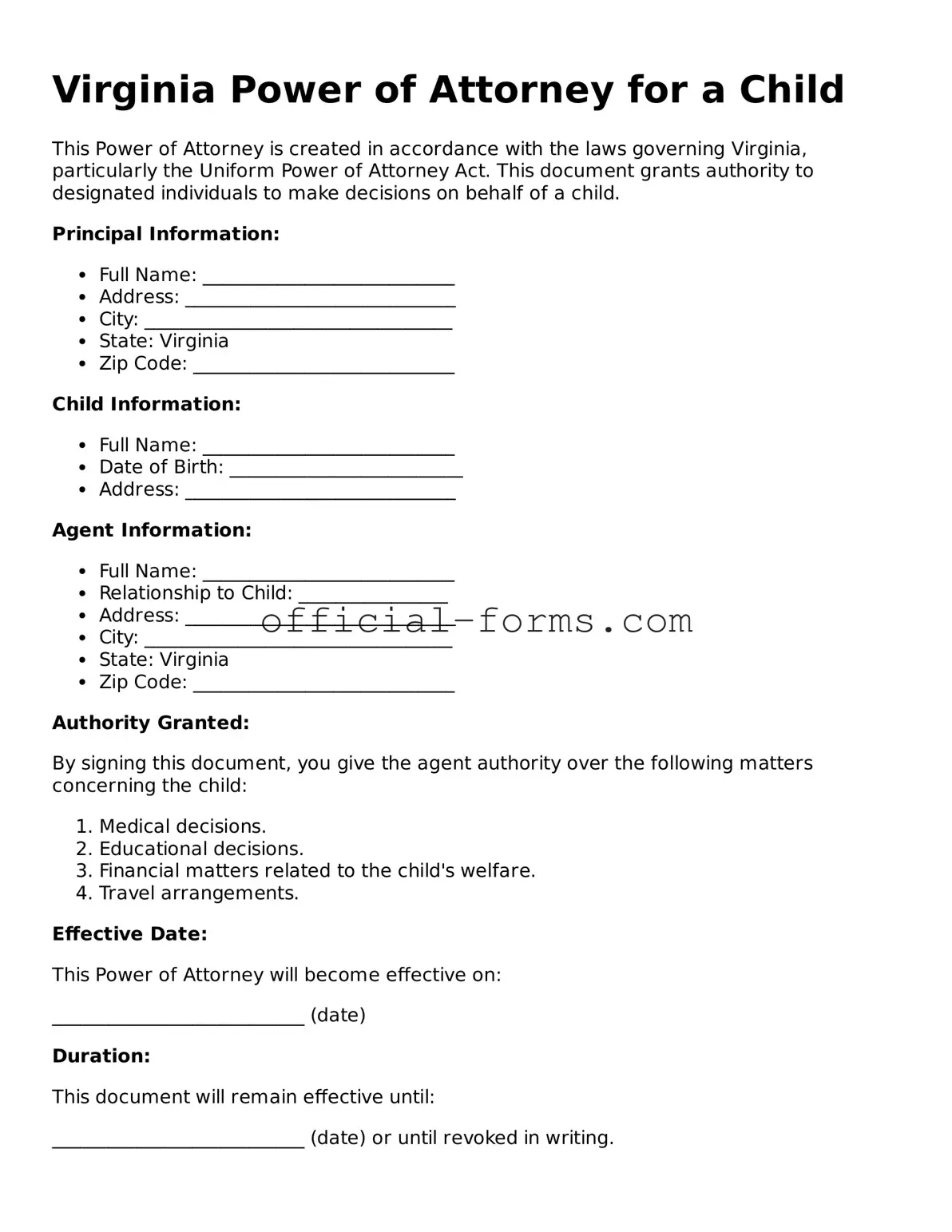Filling out the Virginia Power of Attorney for a Child form can seem straightforward, but many people make common mistakes that can lead to complications. One frequent error is failing to provide complete information about the child. Omitting crucial details such as the child’s full name, date of birth, or address can render the document ineffective. Always ensure that every required field is filled out accurately.
Another common mistake is not specifying the duration of the power of attorney. People often assume that the authority granted will last indefinitely, but without a clear end date, the document may not serve its intended purpose. It is essential to define whether the authority is temporary or ongoing.
Many individuals also neglect to sign the form in the appropriate places. While it may seem trivial, a missing signature can invalidate the entire document. Both the parent granting the power and the agent receiving it must sign the form. Double-checking for signatures can save time and avoid legal issues later.
In some cases, people forget to have the document notarized. Virginia law requires that the Power of Attorney for a Child be notarized to be legally binding. Skipping this step can lead to challenges in its enforcement. Always ensure that a notary public witnesses the signatures.
Another mistake involves selecting an inappropriate agent. The person chosen to act on behalf of the parent should be trustworthy and capable of making decisions in the child's best interest. Selecting someone without considering their suitability can lead to conflicts or poor decision-making.
Additionally, failing to communicate with the chosen agent can create misunderstandings. It is vital to discuss the responsibilities and expectations with the agent before completing the form. This conversation can clarify the scope of authority and ensure everyone is on the same page.
People also often overlook the importance of providing clear instructions regarding medical decisions. The form should specify whether the agent has the authority to make health care decisions for the child. Without clear guidance, the agent may not know how to act in critical situations.
Some individuals mistakenly assume that the Power of Attorney for a Child is a one-size-fits-all document. Each situation is unique, and it may be necessary to customize the form to fit specific needs. Tailoring the document can help address particular circumstances and avoid potential legal challenges.
Another common oversight is not keeping copies of the completed form. After filling out the Power of Attorney, it is crucial to retain copies for personal records and provide copies to the agent and any relevant parties, such as schools or medical providers. This practice ensures that the authority granted is recognized when needed.
Finally, people may fail to review the document periodically. Life circumstances change, and so do the needs of children. Regularly assessing the Power of Attorney for a Child can ensure that it remains relevant and effective. Keeping the document updated is essential for protecting the child's best interests.
